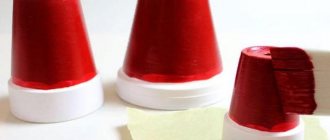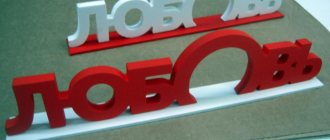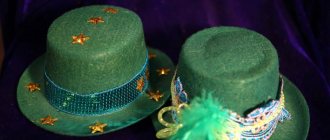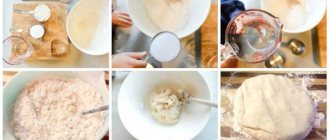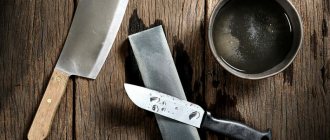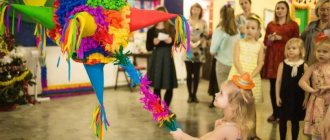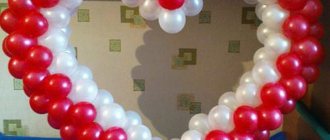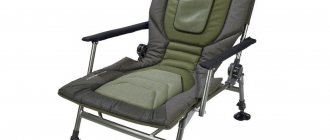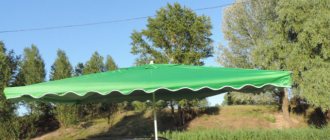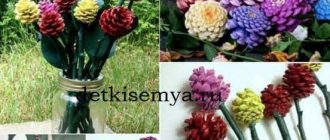Each dacha is a little piece of paradise for its owner. And if for some reason this is not the case, something needs to be changed. For example, to make the area more comfortable and lively. Garden sculptures are great for this, and it's great if you make them yourself.
One of the guardians of the site is a stork. At least, many summer residents liked this idea, because the stork nests only where good people live. This bird is a symbol of prosperity, peace, tranquility, and a family nest.
Manufacturing stages
Now let's get down to step-by-step instructions.
- The plastic container is the body. We will attach the remaining parts to it. The neck is a wire, which is lined with pieces of foam plastic and secured with tape. We will attach the neck to the body with tape, that is, to the bottom of the plastic bottle.
- We place a piece of foam plastic on the neck - this is the head. We try to round it.
- We also make the thighs from foam plastic by inserting equal pieces on both sides of the neck of the bottle. We fix everything with tape.
- The legs will be made from used electrodes. But metal rods of equal length, or just neatly folded wire several times, will also work.
- There will be a long nail as a beak. You can put a piece of wood on it.
- Before applying polyurethane foam, we check the reliability of the support.
- We apply polyurethane foam on top of the resulting layout with our own hands.
- We polish. All excess must be carefully trimmed.
- You need to paint the sculpture with acrylic paints.
- You can insert real feathers into the tail and wings.
Here is our garden bird!
What are the shapes?
An overview of the types of figurines for a summer cottage opens with a classic wooden figurine of a stork. The bird can stand on one leg or freeze in the movement of flapping its wings.
The decorative plastic stork can fit into any landscape design of the area. A family of storks with a nest and a small chick looks especially original. The family nest is also placed on a stump or small decorative snag.
A single bird, imposingly walking around the site, will also become an original decor. It is installed in the middle of the beds.
The most common option is a figurine of a stork sitting on a stone. The stone can be a classic color or framed with grass and small flowers.
In some summer cottages you can find a stork holding a bundle with a baby in its beak. This cute figurine will not leave anyone in the area indifferent.
A stork sitting in the grass will also be a wonderful addition to the setting. There are compositions of several birds resting peacefully in the shade of trees.
Option . Making a stork from polyurethane foam
Now let's talk about another option for making a stork for the garden with your own hands. Now you need to first prepare a 5-liter plastic container, polyurethane foam, polystyrene foam and tape. The algorithm of actions should be as follows.
Step 1.
First, the body parts are attached to the bottle using a container. For the neck, ordinary wire is used, lined with pieces of foam. The thighs need to be made in a similar way (using foam and wire). An ordinary large-diameter nail is quite suitable as a key.
Step 2.
The workpiece will look at the preliminary stage as shown in the image below.
Step 3.
For the bird's legs (at least in this implementation) used electrodes are used. In the absence of electrodes, you can select a similar material - for example, thick wire twisted into several turns, or metal rods from thin reinforcement.
Step 4.
So, all parts of the stork’s “body” have been assembled, but before proceeding to the next step, you need to carefully check the strength and reliability of the fasteners.
Step 5.
After this, the entire layout must be covered with polyurethane foam.
Step 6.
All excess is carefully trimmed off.
Step 7
Now the sculpture is almost ready. If the polyurethane foam has already completely dried, then the bird needs to be painted with acrylic paint.
Step 8
Next, a small piece of wood is taken, a “beak” is modified from it and attached to the “head” of the bird using a nail.
Step 9
Natural feathers are inserted into the wings and tail to make the stork look as realistic as possible. Look what a wonderful garden stork you will make (if you do everything right, of course).
The history of origami
Despite the many versions of the development of this art, we can say for sure that its origins began in Japan. Paper figurines were used in many cases: they were used to decorate gifts, they were present at various ceremonies, paper butterflies were used at weddings and represented the bride and groom.
Japan, of course, is not the only country where this art was present, but in other countries its development was less noticeable and rapid. Despite this, in Europe, as in Japan, paper figures were present in ceremonies, and in Germany some schools devoted a separate lesson to this. After this, Japanese schools also began to teach children this art.
Using polyurethane foam
Stages of making a stork from foam plastic in parts.
An unused foam balloon can be successfully used to make a three-dimensional figure of a stork. Using foam, you can quickly make a three-dimensional blank from which to cut out the desired shape.
To work you will need:
- plastic bottle with a capacity of 5 l;
- scotch;
- Styrofoam;
- steel rod;
- primer;
- paint brush;
- acrylic paints;
- sharp knife;
- rasp.
There is a similar set in the pantry of every home. There are no additional costs required.
A garden decoration in the form of a stork sculpture is made in the following sequence:
- The steel frame is assembled. For strength, it can be fixed by welding.
- A plastic bottle is placed on the frame.
- Styrofoam strips are taped to the neck wire. You can grind them to shape in advance and glue them together.
- The pins intended for the legs are fitted with thigh parts machined from foam plastic.
- The finished frame is moistened with water. Foam is being applied. It covers the entire surface of the workpiece, except for the wire simulating legs.
- After the foam hardens, all excess is cut off. Relief is created using a knife and rasp. After finishing, the sculpture is cleaned of sawdust and dust.
- The dried product is coated with a primer. Next, the bird needs to be painted with acrylic paints. Varnish is applied over the paint.
To make the sculpture more realistic, you can use natural black and white feathers, which are inserted into the tips of the wings and tail.
For reliability, they need to be placed on polyurethane glue.
The finished figure can be installed in the garden for a long time. A stork decorated with acrylic paints withstands ultraviolet radiation, cold and moisture.
Several ways to prepare gypsum mortar
The solution hardens quickly after preparation. This is both its advantage and disadvantage. Plus: the time for making crafts is reduced, minus - you may not have time to make the product. There is also another negative point: fragility. You need to be extremely careful when transporting the figurine so as not to break it.
When making sculptures from plaster, it is very important to prepare the solution correctly. There are many ways, let’s look at the most popular ones
- Add gypsum to water in a ratio of 7 to 10. Mix thoroughly and add 2 tbsp. PVA glue. Thanks to this component, the mixture will be more elastic.
- Mix gypsum with water (6 to 10). After mixing, add 1 part slaked lime. This will make the mixture plastic, and the sculptures, after drying, will be harder and more durable.
A more complex process step by step:
- Dilute 1-2 jars of gouache in water.
- Stir thoroughly until the paint is completely dissolved.
- Pour gypsum into the colored water, stirring gradually (10 to 6 or 10 to 7).
- Mix until smooth, similar to pancake batter. Watch carefully to ensure no bubbles form.
- Gypsum is added to water, not the other way around. This helps avoid dust.
Construction of a nest for a stork
The figure of a bird looks great in the yard among lawns and flower beds. But you can make the yard even more interesting by creating an artificial nest and installing a sculpture of a stork in it. There will always be many places on the site where such a composition would look quite appropriate.
The location of the stork in the nest can be the following objects:
- Roofs of houses, bathhouses, sheds, garages, gazebos and covered barbecues. As a rule, exclusively gable roofs are used. On a flat surface the nest will not be visible. To prevent the structure from being blown away by the wind, a durable platform is made for it, attached directly to the rafter system. The removable structure, consisting of X-shaped overlays connected by boards, has proven itself well. A platform is made on top on which the nest is built.
- The top of a tree or the base of a thick branch. Dacha owners do not always have the opportunity to get rid of a large tree standing in the middle of the plot. But it is quite possible to decorate it accordingly. A sculpture of a bird in a nest can be a key element in a yard setting. The base is constructed from boards on which the platform is knocked together. You can use previously cut branches.
- If a power or communication line runs through the territory of the dacha, then it can be used for decorative purposes. You can dig the pillar yourself. Together with a nest and a bird, it will look great in a recreation area or on a playground. The base is nailed to a wooden post or screwed with self-tapping screws. To secure the socket to a reinforced concrete support, welding will be required. If there are no embedded parts on the support, then you need to break its upper part to get to the reinforcement. The steel base can be removable. To make the composition more realistic, the pole can be painted to match the color of the wood.
The base for the nest can be old wheels from a bicycle, cart, trailer or wheelbarrow. You can weave a nest from tree branches or bushes. Black steel wire is used to secure the structure.
Where to put?
A garden figurine of a stork in a summer cottage is an excellent decorative option. You can place the bird anywhere.
- One of the places where the figurine is placed is the roof. Most often, a whole composition with a nest is installed on the roof. To ensure that the decor holds tightly, crossed boards are used. The sculpture is attached to such a base.
- A chimney is also suitable for installing a stork figurine. However, remember that smoke and sparks escape. The figure must be protected with a steel sheet or raised by a meter using metal rods.
- The figurine can be placed on a tree or stump. Some summer residents use an uprooted old tree for the base, on which the sculpture is installed. A family of storks in a nest looks great on a stump. This composition will become the main accent of the garden plot.
- Single bird figures look great near bushes. Compositions of several storks resting in the shade of vegetation look original.
- The sculpture is placed in the middle of the beds.
- Some summer residents install a figurine of a stork in front of the entrance to the house. Such a figurine at the entrance creates an atmosphere of comfort and hospitality.
- In order for the stork to bring good luck and happiness, there are some nuances in the placement of the figure. Some landscape designers advise installing stork sculptures on the sunny side, as the magical properties of the sculpture are enhanced under the sun's rays.
- Another placement option is to install the craft near the water. You can create a small artificial pond and place a stork and his family next to it.
- You should not install the figurine with its back to the windows of the house. The bird should look into the house. Correct placement of the figurine will give strength and energy to all its inhabitants.
- Since the stork is a symbol of procreation, the bird can be placed near the bedroom window. At the same time, do not forget that the figure should look out the window.
Making a craft is very simple. You can create a unique figurine or composition of several birds. In this case, the product will look no worse than a purchased sculpture.
See below for a review of stork garden figures.
Making a stork from foam plastic
As a rule, after external insulation of walls, quite a lot of foam scraps remain. They do not have to be disposed of. You can make many interesting and beautiful crafts from this material. Polystyrene foam is lightweight and easy to process. You can make a stork from foam plastic quickly, without using complex tools.
For work you will need the following materials and tools:
Making a stork from polyurethane foam.
- glue;
- sharp knife;
- steel rod;
- wood saw;
- pliers;
- sandpaper;
- black paint;
- paint brush.
Making a stork sculpture for the garden is carried out in the following sequence:
- Blanks are made from wire that will imitate the legs of a bird. Their lower ends are sharpened. The upper ends of the rod are bent at right angles for fastening in foam.
- The contours of the bird's body parts are applied to the foam. The largest piece should be the central part of the torso. The remaining fragments will be needed to give the figure volume, create wings, neck and head.
- The blanks are cut out. This is best done with a saw.
- Steel rods are attached to the central part of the body. In order for subsequent fragments to fit tightly onto the base, grooves are made in it for the rod. To avoid lateral vibrations, the rod is fixed to the base with additional brackets.
- Styrofoam strips are glued to the central part of the body, adding volume. Wings are glued on top of them.
- The neck and head of the sculpture are placed on the pin.
- Using a knife and sandpaper, the stork figure is given its final shape. Additional finishing is not needed, since a relief imitation of feathers can be created on the foam.
- The tail and wings of the bird are painted with black paint. The beak can be wrapped with red electrical tape or painted.
The final stage of needlework is the eyes. They are made from steel bearings or glass balls.
Let's start creating
It’s easy to make an origami paper crane with your own hands.
First, let's fold a simple crane. You will need a square-shaped piece of paper.
- Fold the square in half on one side and unbend it. We do the same with the second side;
- Four folds have formed on the workpiece. We place the figure with the angle up and tuck the side parts inward;
- Pull apart the side layers. We bend and fold back the right and left edges, then bend and straighten the top of the figure. Turn over and do the same with the other side;
- We lift the top layer of the square and bend it upward;
- Turn the workpiece over and do the other side in the same way;
- We push the layers apart on the sides and fold the side parts of the figure towards the middle;
- Let's turn the crane to the opposite side and do the same actions as in step 6;
- Now we will spread the side layers of the workpiece and turn the lower sharp tips up. We press on the sides, align the craft and turn the nose and tail of the bird to the sides;
- We form the nose of the bird, straighten the wings and that’s it, the work is finished.
The action plan for assembling the crane can be viewed here:
Making storks from plastic bottles and canisters
This craft is made from a plastic canister, and the plumage is cut out of plastic bottles. To make a similar decoration for the garden we will need: a plastic container with a volume of 4-5 liters, white and brown plastic bottles with a volume of 1-2 liters, some polystyrene foam, a masonry mesh with a cell of 2-4 cm, wire for knitting, a corrugated tube from a siphon with a diameter of 40 mm, metal-plastic tube with a diameter of 16 mm, self-tapping screws with a press washer, a pistol knife, plastic glue or a glue gun, red and white paint, emery cloth. If everything is ready, let's start:
- First, let's make the bird's head. We cut out the foam blank with a pistol knife.
- We process the part with sandpaper until the desired shape is obtained.
- From a brown bottle we cut out two sharp rectangles for the beak. We bend the blanks lengthwise and glue them onto the foam with special glue or using a glue gun. While the glue hardens, secure the parts with tape. Additionally, we attach the beak covering to the foam using self-tapping screws.
- We cut out the bird's paws from the upper parts of brown bottles, bending three claws forward and one back, as in the photo.
- To form the body of the bird, take a plastic container and cut off its handle.
- We prepare a U-shaped part from the masonry mesh, which we fasten to the container with wire, as in the photo.
- Prepare the plumage of the bird's body and tail. To do this, we cut white milk bottles into six longitudinal parts.
- For the feathering of the bird's neck, we prepare parts from the smooth part of the bottles with the lower edge in the form of sharp triangles. The wings are covered with small oval elements of white and brown color.
- We begin assembling the body of the craft. We make two holes in the canister to attach the legs. They are placed on the side of the neck, on the edge of the container opposite to the neck. We insert metal-plastic tubes into the holes and fix them with self-tapping screws to the wall of the canister. We bend the tubes - legs so that the front part of the container is raised.
- From the opposite canister we attach a corrugated tube with self-tapping screws as the bird’s neck.
- We attach the plumage to the canister and tube using self-tapping screws. We start working from the bottom of the tail, cover the bird's abdomen, and then the lower part of the neck.
- We put the already prepared legs on the leg tubes from below and attach them to the tubes using self-tapping screws.
- We cover the bird's neck with parts with sharp triangular edges. We secure them sequentially with self-tapping screws, stacking them on top of each other in the direction from bottom to top.
- We fix the topmost elements with hot glue. We also attach the head to the neck using a glue gun.
- We secure the plumage to the body of the bird by screwing the feathers to the mesh with thin wire.
- We secure the edge elements with hot glue.
- We form the wings of the bird on separate pieces of mesh. We fasten the brown and white elements to the mesh with thin wire.
- We make the bird's tail from the largest petals and screw them directly to the mesh on the canister.
- We attach the finished wings to the body with self-tapping screws and thin wire.
- We cover the stork's head with white acrylic paint in several layers to protect the foam from the sun. We paint the beak and legs red. We draw the eyes with black paint.
The stork is ready! Of course, a composition of two birds will produce an even greater effect. The following video is one of the examples of the implementation of the presented master class.
Choosing material
The Internet contains many photos of crane crafts made from paper, natural materials, plastic spoons, pieces of fabric, feathers and cotton wool, and even pumpkin seeds.
All these materials can be used to create a crane craft with your own hands. The product can be flat or voluminous. The photo of the three-dimensional crane craft looks especially elegant. The main thing is that the patterns for making crane crafts correspond to the age of the child.
Master class on making a stork
There are many options for making a stork from plastic containers using elements made of wood, polyurethane foam, and polystyrene foam.
This original composition of a stork family in a nest is also made of plastic
Even a beginner can make such a garden sculpture, guided by video material with step-by-step instructions for the work process.
Video: how to make a stork from plastic bottles
Storks made from plastic bottles are an original decorative decoration for a personal plot and a subject of universal admiration. After all, they are made from ordinary garbage, transformed by skillful hands into works of art. Made of durable plastic, they are not afraid of rain and snow. Over the years, the figures will not swell, the paint will not fade or peel off.
The beautiful and bright figure of a stork will add a touch of grace to the garden landscape, especially if it is made by hand. It may seem that making a stork is difficult and requires many years of practice in needlework, but the method of making it is simple and the materials are inexpensive. Such a sculpture will be an excellent addition to the local area and decoration for a flower bed, lawn and garden plot, symbolizing the wealth, well-being and family comfort of its owners.
Content
- Option #1. Making a stork from plastic bottles
- Option #2. Making a stork from polyurethane foam
- Option #3. Making a stork for the garden from a canister
A well-groomed and attractive garden will always please the eye. To make your garden more cozy, you can decorate it with various garden sculptures made by yourself. Today we will talk about how to make a stork for the garden
and what materials can be used for this.
Let's start with the simplest thing - PET bottles.
Do-it-yourself stork for a summer residence: step-by-step technology
Each dacha is a little piece of paradise for its owner. And if for some reason this is not the case, something needs to be changed. For example, to make the area more comfortable and lively. Garden sculptures are great for this, and it's great if you make them yourself.
One of the guardians of the site is a stork. At least, many summer residents liked this idea, because the stork nests only where good people live. This bird is a symbol of prosperity, peace, tranquility, and a family nest.
Conclusion
- The most labor-intensive work on a garden stork is creating its plumage - each feather must be worked on by hand, giving the edges a jagged or fringed shape so that they look like natural bird feathers.
- Feathers from transparent bottles should be painted white and black so that they imitate the natural plumage of a stork.
- Before painting the feathers, they need to be wiped off from dust and rubbed with an alcohol solution so that the paint goes on evenly.
- The easiest way to make a stork is to make it entirely out of foam and sharpen it with a knife and rasp to the desired shape; the simplest wing without a frame is made from a piece of plywood, which is screwed to the homemade body with self-tapping screws.
- The body with a neck can be made from a plastic 5-liter canister with a cut off handle and neck, into which a corrugated tube is then inserted.
- You can make garden sculptures and stone crafts from leftover building materials lying around after renovations, and it will cost almost nothing. Additionally, you will only need to buy acrylic paints in order to draw the eyes and color the feathers.
Step-by-step instructions for creating a “Garden Mushroom” figurine
Fungus on the base of a plastic bottle. For the form you will need:
- Plastic bottle for mushroom stem.
- An old bowl or rubber ball.
Materials for sculpture:
- Sculptural plaster;
- PVA glue
- Construction knife with a retractable blade Ordinary compass; Simple pencil;
- Facade paints,
- Decor (optional) Various beads, flowers for decoration;
- Protective varnish,
- Food film,
- Vaseline (or other fatty substance).
Sequence of work:
Spread cling film of the required size with a mixture of sunflower oil, liquid soap and water. (The solution is prepared in a ratio of 2:1:7, you can measure it with tablespoons)
Wrap the inside of the mold with film so that after hardening it is easy to remove the plaster from it.
Cut the plastic bottle crosswise (in diameter) so that the part with the neck looks like the stem of a mushroom. Dilute a small part of the gypsum by carefully pouring the powder into the water and stirring gently. Pour the mixture into the mold
To save material, you can put a smaller one inside the main bottle. When the mushroom stem is ready, it is carefully removed from the mold, after cutting it with a construction knife. It's better to make several cuts. Then they start making the hat. To do this, use a rubber ball cut in half or an old bowl. The mold is treated in the same way as a plastic bottle; the inside is lined with a greasy film.
Pour the gypsum solution to the desired level. You should not make the hat too voluminous, then it will be easier to hold on the stem. As soon as the solution in the cap begins to harden, the finished leg is inserted into the center. Wait until the “structure” is completely dry, about 30 minutes. They are primed, you can buy a special façade compound or use a 1:2 PVA glue solution. Painting begins after 2 - 3 hours. Facade paints are used. Finally, a protective varnish for exterior use is applied to the dried paint.
The sequence of making the sculpture “Mushroom”
Basic mistakes
When creating gypsum products, you should avoid the following common mistakes:
- Pouring water into plaster. The result will be a lumpy solution, unsuitable for further work.
- Creation of large plaster figures without a reinforcing frame. The greater the weight of the mold, the greater the likelihood of it breaking.
- Mixing large quantities of plaster at once. It must be remembered that gypsum tends to harden very quickly, so it is recommended to mix it in parts.
To decorate a garden or plot, you can choose ready-made figures from different materials, but hand-made gypsum products will make the design unique. In this case, you just need to choose the type of figures, determine the composition and you can begin the simple creative process. Working with gypsum will not take much time due to precise adherence to the technology for using the material.
STORK FROM PLASTIC BOTTLES (VIDEO)
You may also be interested in the article in which we talked about the options and nuances of making a nest for a stork yourself.
And your bird can become the founder of a whole bird family in the country. For example, a stork can open a bird gallery, but a homemade flamingo, peacock, heron will continue it... Fantasy is limitless! Some craftsmen simply paint the plywood blank and cover it with varnish. The result is a unique painting on wood, where fantasy images are combined with your own creative abilities.
Your garden will truly become a place of miracles.
Test of strength
Before the birds arrive, it is important to make sure that the nest will not crumble as soon as the bird family settles there. Check your strength every year
design. Remove excess branches, dirt, strengthen the nest. Then the chances that it will be inhabited by long-legged inhabitants will increase.
We recommend reading:
- How to make a decorative border - features of choice and options for installing a decorative border (120 photos and videos)
- How to make a washstand - a step-by-step description of how to make a washstand correctly with your own hands (135 photos and videos)
- DIY house for children - 150 photos, drawings, video master class and step-by-step manufacturing instructions
Option . Making a stork for the garden from a canister
Before you begin, make sure you have the following supplies:
· five liter canisters;
· plastic bottles (black and white);
After this, you need to perform the following sequence of actions.
Step 1.
Cut out the foam blanks and use a knife to shape the head. Cut out the eye sockets and make the beak flatter.
Step 2.
Use sandpaper to make the surface as smooth as possible. Place toy eyes in the eye sockets (we’ve already talked about where you can get them).
Step 3.
Cut a beak from a plastic bottle and secure it with glue.
Step 4.
Make a bird's body from a plastic canister and cut off the handle.
Step 5.
Cut a piece of mesh large enough to wrap around the canister. Round the mesh a little so that it looks more like wings.
Step 6.
A thick metal rod must be bent and legs made from it.
Step 7
Feathers for the stork are cut from white bottles.
Step 8
After this, you can proceed directly to assembling all the elements. Work should start from the “tail”.
Step 9
For the “neck”, a corrugation (for example, from a vacuum cleaner) or something similar is put on the wire. The feathers are attached using self-tapping screws. Due to the fact that our bird’s wings are folded, feathers can only be attached to the belly and slightly on the sides.
Step 10
White bottles are cut in half, and a fringe is formed at the cut sites. The bottles are attached to the “neck” using tape.
Step 11
“Wings” must be made from one edge of the prepared mesh. It is important that the second row covers the first by 1/3. On the third row, white plastic is used.
Step 12
For the “legs” of the stork, appropriate blanks are cut out of 0.5-liter bottles.
Step 13
All that remains is to paint the bird’s “beak” and “legs” red. That's it, your DIY garden stork is ready!
For a more detailed introduction to this manufacturing method, we recommend watching the thematic video material.
Video – DIY stork
What should a new beekeeper know?
Every beekeeper should know this:
Activities of a beekeeper. Many people want to become beekeepers and sometimes they don’t really understand whether they can do beekeeping or not. It is necessary to find out the compatibility of bee venom with the beekeeper’s body. If there are no allergies, then you need to purchase the most basic equipment.
Location of hives. It is necessary to understand how to place hives correctly. The location is from another hive to 2 meters from another house, you cannot warp them.
Care. A bee colony is no less worth caring for than any other pet. You can't kill drones.
Selection of bees. It should be based on your region.
Frame location. If the frames are placed incorrectly, the bees will make two tongues, not honeycombs, so it will need to be processed into wax.
Building bees. At the end of summer, build up young bees for the winter. Winter bees live 6-7 months.
Feed. You should not skimp on food for winter bees, as they may not survive until spring. But you shouldn’t overfeed either.
Wintering of bees. There is no need to insulate the hive too much. For the winter it is necessary to open 2 entrances. Advantages – you don’t need to spend anything; bees are not afraid of the cold.
How to decorate
You can make a whole composition out of such a crane. For example, make a nest from straw or black threads soaked in glue in which the egg will lie.
Or make a small crane and place it on the same stone. And fix the base itself on a cardboard backing painted blue. A few extra pebbles and paper reeds will create the look of a real swamp.
Note!
- Do-it-yourself dove: TOP-150 photos of non-standard crafts made from scrap materials. Step-by-Step Instructions for Making a Dove for Kids
- Felt mouse: 160 best photos of DIY felt mouse crafts + simple and quick instructions for beginners
- Do-it-yourself bullfinch: TOP-140 photos of exclusive options for crafts from scrap materials + simple instructions for children
